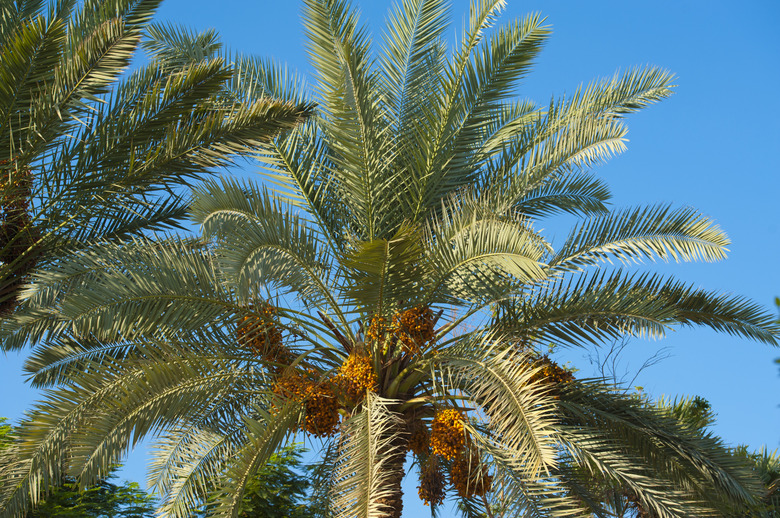How To Care For A Pineapple Palm
We may receive a commission on purchases made from links.
Pineapple palms (Phoenix canariensis) are easily recognizable and are sometimes called Canary Island date palms. In addition to knowing how to care for a pineapple palm, you should learn some basics, like how they grow up to 60 feet tall and 3 feet wide and that they have pineapplelike crowns that sit above their trunk and below their dark-green fronds.
These elegant palm trees are part of the palm family Arecaceae, and they are native to and the symbol of the Canary Islands. They can grown as perennials in U.S. Department of Agriculture plant hardiness zones 9 through 11.
About Pineapple Palms
About Pineapple Palms
These stately, majestic trees can get quite big and will not work in smaller gardens because of their size, but they will fit with larger residential and business properties, along streets and in parks. You are more likely to encounter them in tropical and subtropical regions. Many resorts and cosmopolitan centers use pineapple palms in their landscaping, and they are sure to garner attention from admirers.
Fortunately, palm tree leaves are safe to plant around children and pets. Their trunks can feel rough, but they are not pointy. The parts of the tree where the leaves attach to the trunk can have sharp spines (and so can the bases), however, so be very careful when handling them. Although they produce small yellow or orange dates, their fruit is not very tasty, and each contains a single large seed.
Planting Pineapple Palms
Planting Pineapple Palms
These beautiful palm trees should be planted on fertile, moist, well-drained soil. Pineapple palms prefer locations that offer bright, full sun, but they are able to tolerate light shade. They can handle colder weather and light frosts but not below 20 degrees Fahrenheit. They do well in semiarid coastal regions, and they can be planted on inland sides of coastal properties.
Since the trees can get large, they should never be planted close to buildings. It is also best not to plant them directly adjacent to paths and sidewalks since their sharp spines can injure people. Many gardeners grow these trees in pots and keep them on patios and decks, but once they get too big, they have to be replanted.
Once the palm is in the ground, use a soaker hose to water it every day for the first two weeks. Then, cut back to once a week for the first growing season. Ensure that the top 24 inches of soil are moist after watering the first time, and after that, the plant only needs 2 inches of moist soil on an ongoing basis.
Caring for Pineapple Palms
Caring for Pineapple Palms
You can add a 3-inch layer of mulch around the base to keep the soil moist and prevent weeds. If you want to fertilize, use an 8-2-12 plus 4 percent magnesium mix and apply 1 pound for every 100 square feet of growing area in midspring and early summer.
Pineapple palm fronds can grow up to 15 feet. These trees are easy to care for, and they should be trimmed once a year in the spring. Be sure to wear protective gloves before starting, and use a pair of long-handled pruning shears. Remove any discolored, rotting or dead leaves and also prune any fruit stalks and flowers that are past their prime.
Take care not to remove any green leaves that point upward or horizontally. Doing this can increase the tree's risk for plant diseases, and it can also stunt the tree's growth.
